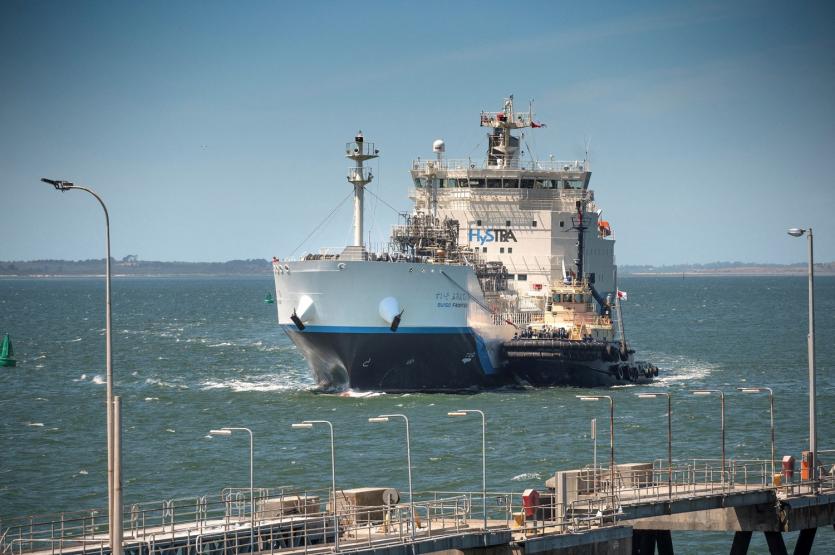The Suiso Frontier, the world's first hydrogen carrier, built by Japan's Kawasaki Heavy Industries, is pictured upon its arrival from Kobe, Japan at the Port of Hastings in Victoria, Australia January 20, 2022. Photo: HySTRA/Handout /REUTERS
By Patryk Krych | The World Daily | JANUARY 21st 2022
Researchers fear a new fossil fuel industry may begin with an Australian shipment of liquid hydrogen, the first of its kind, set to be sent off to Japan in what may be a new series of trades that will inevitably lead to an increase in carbon emissions in the country.
This commercial shipment, Australia’s first containing liquid nitrogen, is part of the $500 million Hydrogen Energy Supply Chain (HESC) pilot project, led primarily by a Japanese-Australian consortium. The ship is called the Suiso Frontier, and it’s the first liquid nitrogen carrier in the world. However, the news has many researchers and environmentalists concerned.
“Hydrogen derived from fossil fuel sources, like what is being shipped out of the LaTrobe Valley, which is derived from some of the world’s dirtiest coal, is really just a new fossil fuel industry,” said senior researcher for climate solutions at the Climate Council, Tim Baxter.
He added: “Fossil hydrogen is a whole new fossil fuel industry, regardless of whether carbon capture and storage is attached to it. It results in extraordinary greenhouse gas emissions. It’s not a climate solution.”
Though carbon emissions are heavily associated with the production of this liquid nitrogen as a fuel source, it’s been said that carbon capture storage will be used to even out the issue, thus making the resulting carbon emissions negligible.






